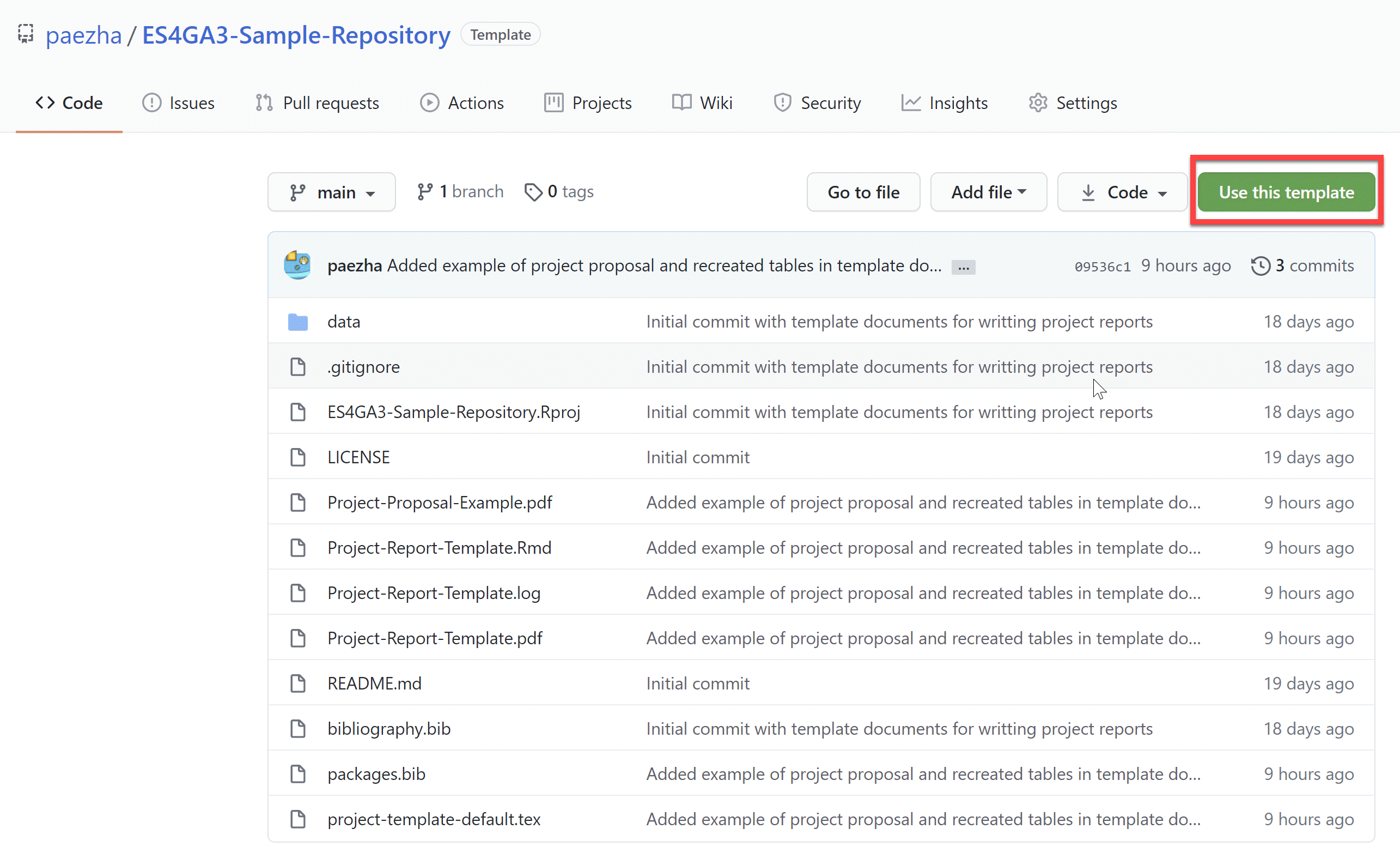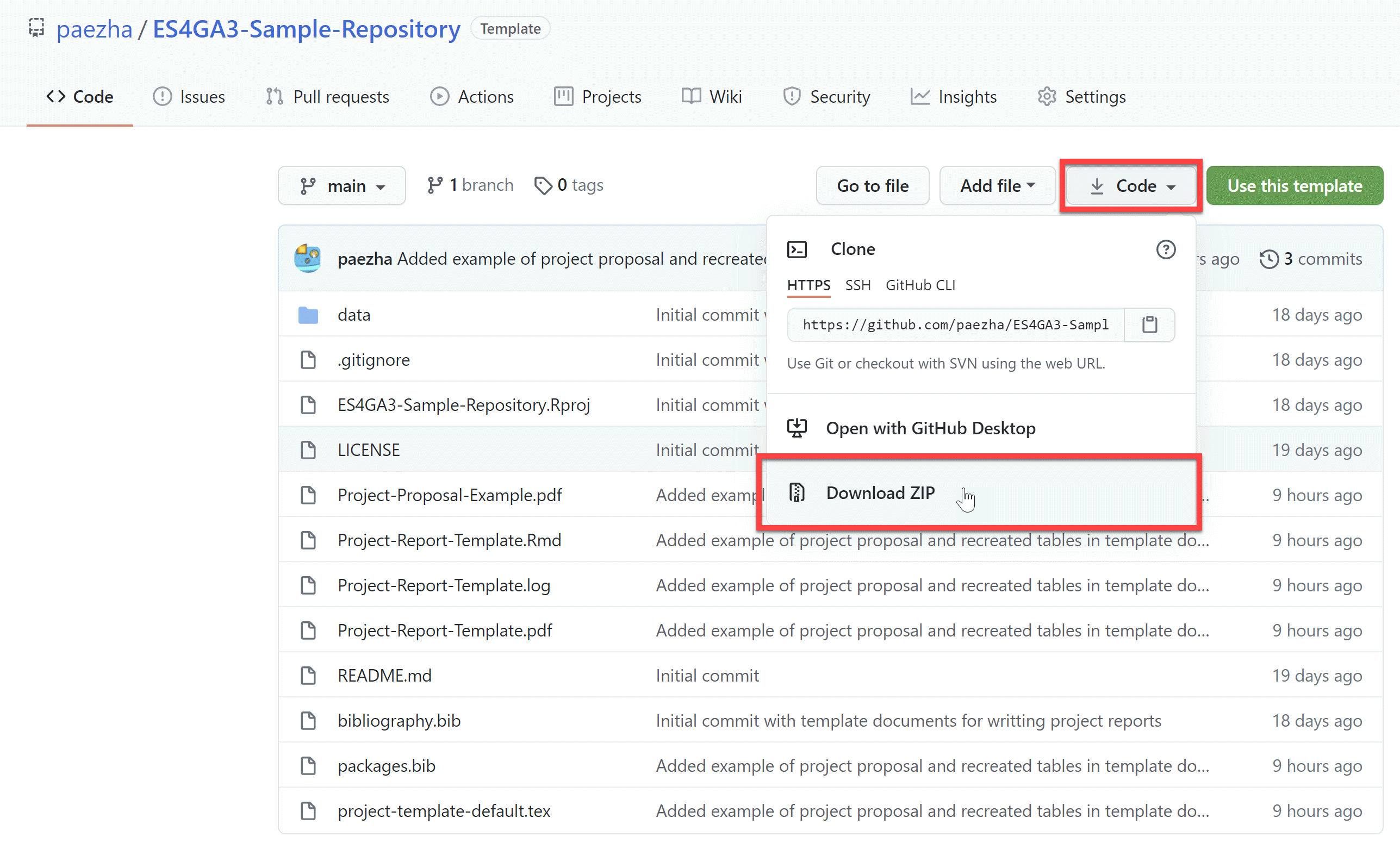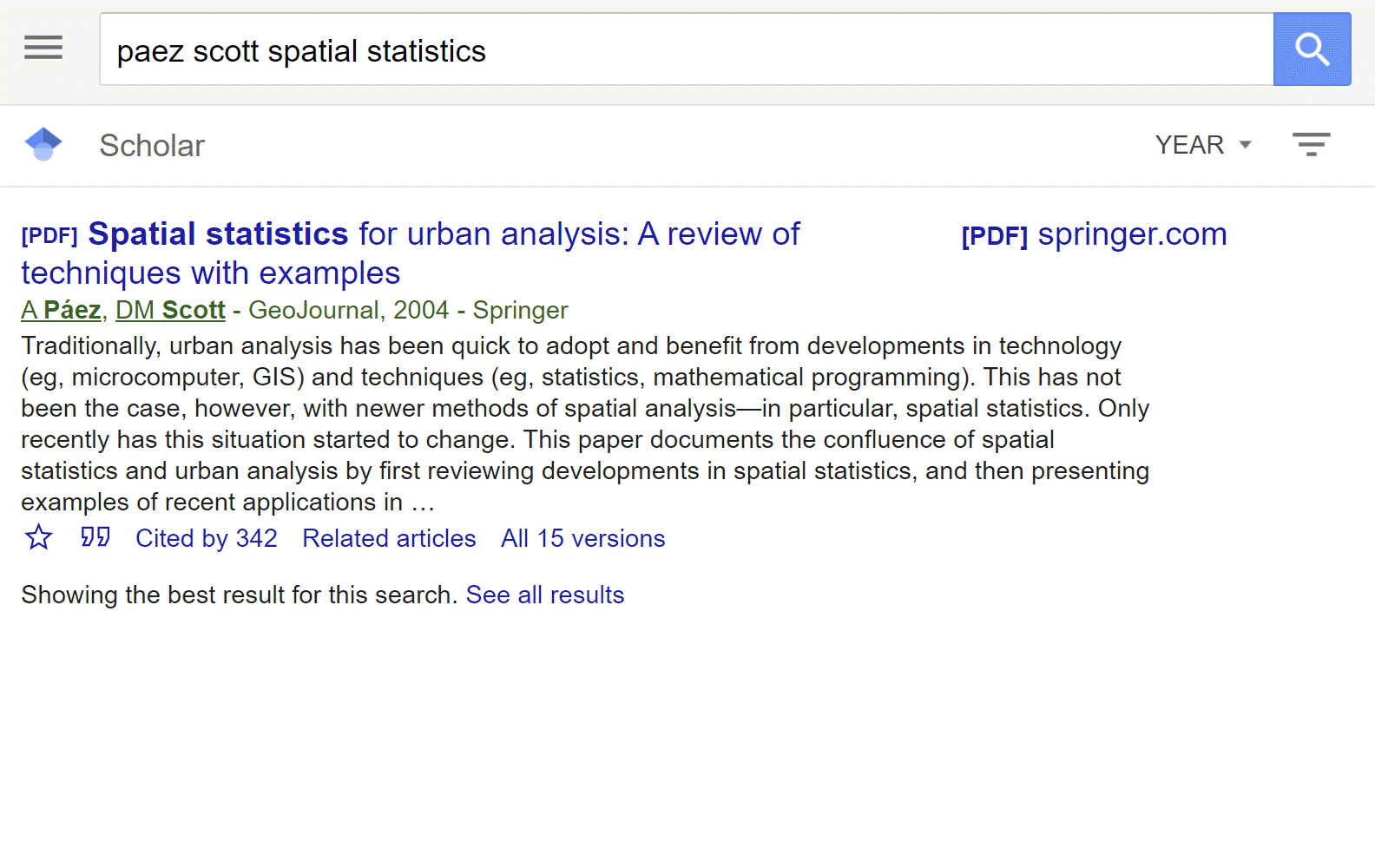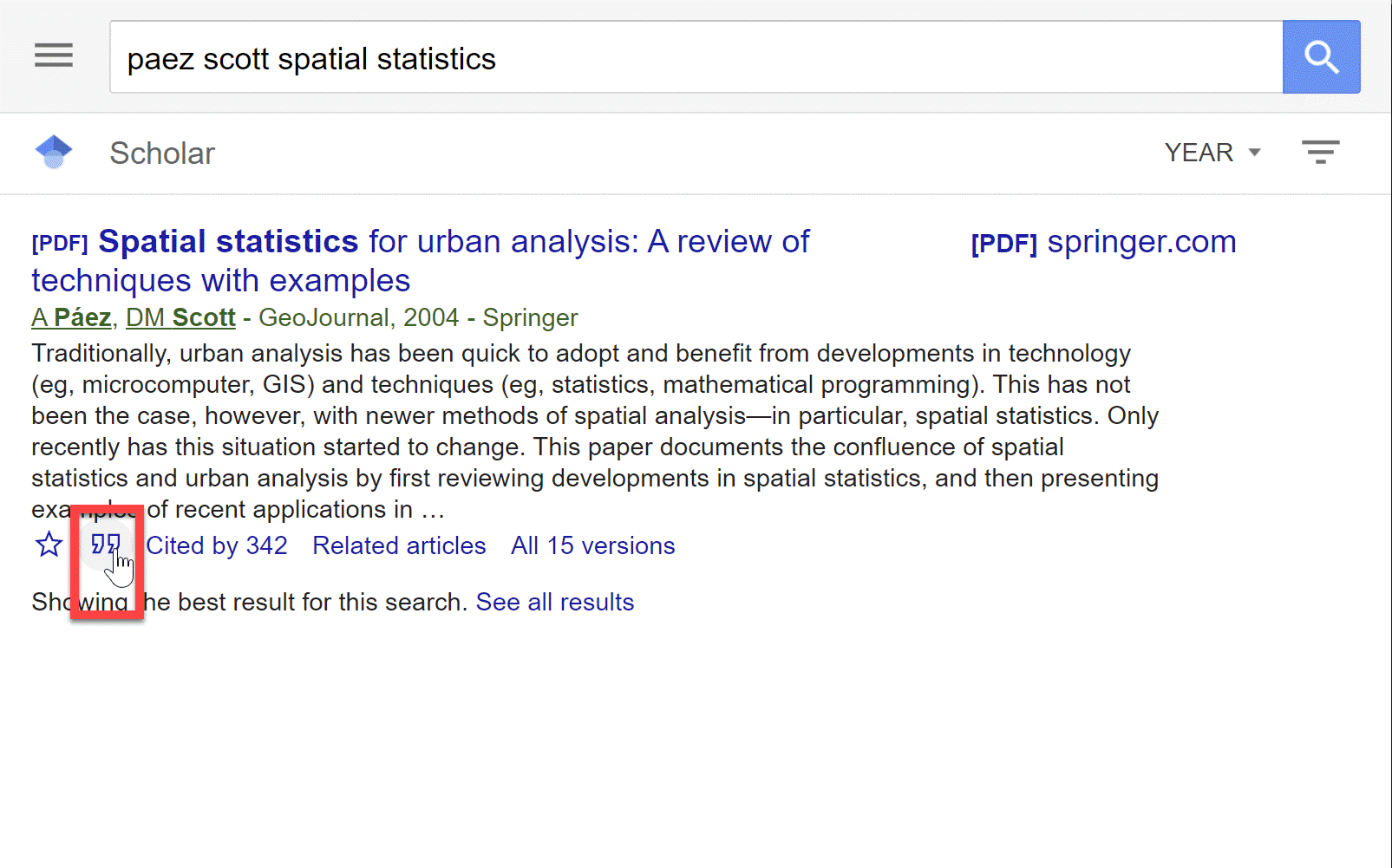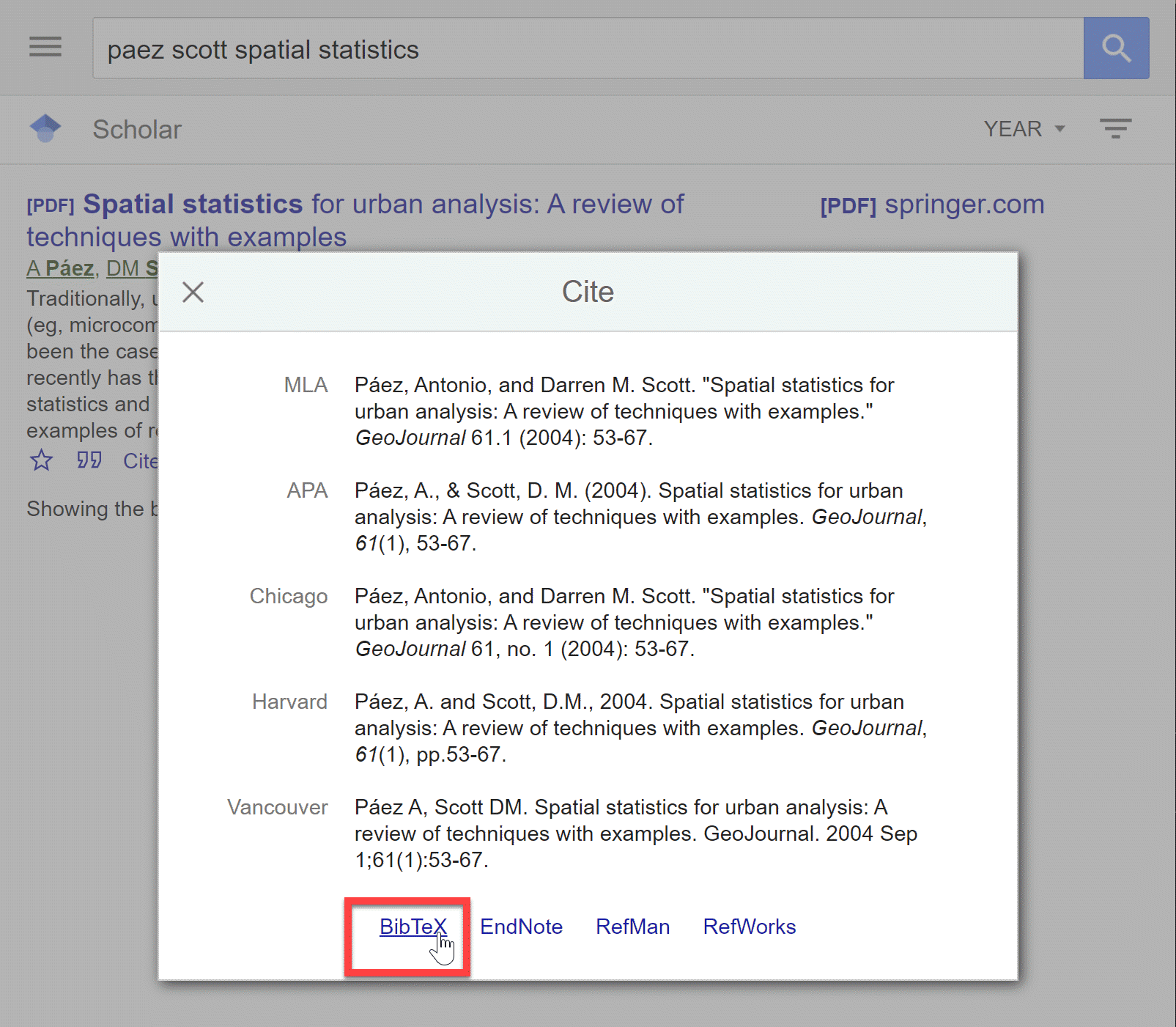This repository provides a sample of a student project developed as part of the course ENVSOCTY 4GA3 Applied Spatial Statistics. It can also be used as a template to create a new project repository.
To use this repository as a template, you will need a GitHub account. If you would like to read a quick introduction to the use of GitHub to collaborate with others on a project, check this out:
https://github.com/paezha/Reproducible-Research-Workflow/tree/master/Session-03-Git-and-GitHub
Creating a repository using this as a template is as easy as a click of a button:
The owner of the new repository can invite others to collaborate.
Using the repository as a template is an option to work with others in your project, but not the only one. If you prefer working offline, or by email, using Google Drive, Microsoft One Drive, or share your project files in any other way, you can still benefit from the files in this repository. Simply download the files in the repository and use whatever you need.
"Using whatever you need" means that. You might want to work on your project in R markdown (which I highly recommend because it can be used to create your final report, as explained below). But if you prefer to write your report in Word, or Google Documents, or whatever, you might only want to browse some of the files to see an example of a project proposal and a project report.
This repository has a number of files that you can use to get inspired for your project and that will give you a sense of the expectations. In addition, you can use some of the files as templates for your own project.
If you decide to use this repository as a template, the folder structure proposed is simple: you just need a folder to put your data. You can safely ignore the folder _figures; it contains the figures used by this README. You can also ignore the README.md file. Or, as an alternative, you could use the README file as a cover for your project (you can always point to it in your CV, for example), and then put any figures that your README.md file uses in _figures.
You might begin by browsing the file Project-Proposal-Example.pdf.
This project proposal was created by former students Zahra Akhtar, Anastasiia Kalinina, Gabriella Morrone, Jillian Walters, and Jocelyn Wu. It proposed a spatial analysis of opioid pill prescriptions at the level of counties in the United States.
The elements of the proposal are as follows:
- Cover Page
With title of proposal, name and code of course, and name and student numbers of group members
- Context for Proposal (500 words max)
A brief literature review to position the project within the body of knowledge. You should consult at least 10 sources (papers, book chapters, reports) to prepare this section of the proposal.
- Objective of project (700 words max)
What is (are) the research question(s) that you aim to answer? Pose the question(s) in a form that is amenable to statistical testing. What will you know at the end of the project that you did not know at the beginning? Why should we care?
- Data (as many words as needed)
Which data will you use for the project? What is (are) the source(s) of data? Describe the variables of interest, and how they relate to your research question.
- Anticipated Findings (300 words max)
Describe the anticipated findings and their relevance.
- List of References (as many words as needed)
List all the sources that are cited in the proposal.
This particular proposal earned a perfect grade: 100/100.
The project report was written in R markdown. You can see the file here.
The R markdown file has numerous useful examples to help you create a beautiful report. The output file (after knitting) is here.
You can use the Project-Report-Template.Rmd file directly: just save it with a different name and that becomes your working document. You can change the title, the names of the authors, student numbers, abstract, and so on by editing the header of the file. When you want to render the output file (i.e., create the pdf file), just knit the R markdown document.
The companion files for the R markdown document are files project-template-default.tex and bibliography.bib. Remember to keep these two files in the same folder where you keep you R markdown document.
The bibliography.bib file is where you save your references. You can obtain references in bib format easily from Google Scholar and other literature search engines (e.g., Web of Science). An example of this is shown in the figures below:
Simply copy and paste the citation in bibtex format to your bibliography.bib file, and you are ready to cite it in your R markdown document. See the examples there.
This is the rubric for the final report:
Rubric for grading projects.
10% Introduction – Make sure that there is a clear and concise research question. The introduction is engaging, states the main topic and previews the structure of the paper.
20% Background – Literature review is relevant, up to date, and complete. The background provides a conceptual or theoretical framework to support the analysis in the paper.
20% Data and Methods – The methods are correctly described. Sources of data are properly documented. The format in which the data are used is clearly and precisely described.
20% Analysis – Descriptive statistics of the dataset are present. All parts of the analysis are relevant to the research question, and their use is justified. There is no redundancy in presentation. All methods are correctly applied.
15% Conclusions and Recommendations** – The conclusion speaks directly to the research question, and is supported by the analysis.
10% Presentation – Presentation is professional, with a title page, title, appropriate use of headings and subheadings, and a formatted list of references.
5% Extra mile – Correct application of a method or tool not covered in the course.
The final report in the example by Akhtar, Kalinina, Morrone, Walters, and Wu earned a 91/100. In this report, the students identified an interesting data set (the Washington Post opioids database), learned the tools to work with it, and presented an interesting analysis complemented with data from the census. The project had a clear research question (the potential statistical relationship between opioid prescriptions and various indicators of socio-economic deprivation); various methods from the course were used, the discussion was on point, and the presentation professional. The final grade of the project would have been a 100/100 if the residuals had been analyzed for spatial autocorrelation, and the results of this analysis had been discussed (and any issues had been corrected).
